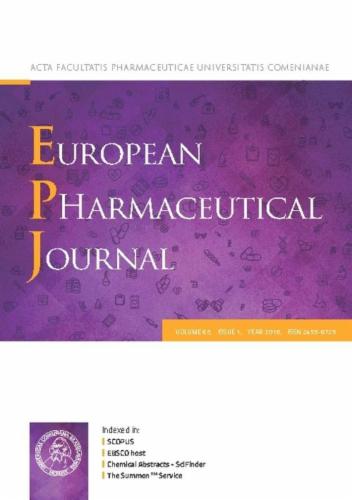氢化植物卵磷脂作为化妆品和制药辅料的理化研究。
IF 4.7
3区 医学
Q1 PHARMACOLOGY & PHARMACY
引用次数: 0
摘要
卵磷脂是一个通称,通常用来表示主要由磷脂构成的产品。卵磷脂可作为润湿剂、乳化剂以及脂质体和胶束的合成原料,广泛应用于医药和化妆品领域。它的主要来源之一是植物。从它们的提取中可以得到主要由磷脂酰胆碱和磷脂酰乙醇胺组成的终产物。与新提取的卵磷脂相关的常见问题是存在富含双键的产物,易受光和空气氧化的影响。通过在纯化过程中添加进一步的催化步骤,可以形成稳定的氢化卵磷脂产品。尽管这种氢化卵磷脂被广泛使用,但人们对其物理化学性质知之甚少,主要基于单层和多层x射线散射方法进行了详细的研究。此外,还研究了这些卵磷脂的乳化性质,如亲水性-亲脂性偏差(HLD参数)和溶解度。一般发现,含有高含量磷脂酰胆碱(90- 100%)的混合物形成了明确的层状相,显示单层完全不带电,而含有低含量磷脂酰胆碱(75- 80%)的卵磷脂形成了带电单层和由于带电物种的存在而位置不相关的双层。所研究的氢化磷脂(PLs)在几种助溶剂中高度可溶,这些助溶剂适合将这些磷脂掺入相关的皮肤配方中。所研究的PLs能够稳定创新的真皮胶体配方,如神经酰胺,并改善将它们纳入角质层模型。总之,下面的研究将使氢化卵磷脂在化妆品和医药产品的配方中得到更合理的选择。本文章由计算机程序翻译,如有差异,请以英文原文为准。

Hydrogenated plant-based lecithins as excipients for cosmetic and pharmaceutical applications: A physical-chemical study
Lecithin is a generic term that is often used to indicate a product mainly constituted of phospholipids. Lecithins can be used in pharmaceutical and cosmetic field as wetting agents, emulsifiers and building blocks for the production of liposomes and micelles. One of its main sources are plants. From their extraction a final product mainly constituted of phosphatidylcholines and phosphatidylethanolamines can be obtained. Common issue connected to freshly extracted lecithins is the presence of a product rich in double bonds subject to photo and air oxidation. By adding in the purification process a further catalytic step, it is possible to form stable hydrogenated lecithin products. Despite their widespread use, little is known about the physicochemical properties of such hydrogenated lecithins, detailed studies mainly based on X-ray scattering methods on mono- and multi-layers have been performed. Additionally, the emulsifying properties of these lecithins such as Hydrophilic-Lipophilic Deviation (HLD parameter) and solubility have also been studied. General findings are that mixtures with higher amounts of phosphatidylcholines (90–100 %) formed a well-defined lamellar phase showing in monolayers complete absence of charge, while lecithins with lower phosphatidylcholine contents (75–80 %) formed charged monolayers and positionally uncorrelated bilayers due to the presence of charged species. The hydrogenated phospholipids (PLs) studied were highly soluble in several co-solvents which are suitable for the incorporation of these phospholipids into relevant dermal formulations. The studied PLs are able to stabilize innovative dermal colloidal formulations such as cerosomes and to improve the incorporation of them into Stratum corneum models.
In conclusion, the following studies will allow a more rational selection of hydrogenated lecithins for the formulation of cosmetic and pharmaceutical products.
求助全文
通过发布文献求助,成功后即可免费获取论文全文。
去求助
来源期刊
CiteScore
9.60
自引率
2.20%
发文量
248
审稿时长
50 days
期刊介绍:
The journal publishes research articles, review articles and scientific commentaries on all aspects of the pharmaceutical sciences with emphasis on conceptual novelty and scientific quality. The Editors welcome articles in this multidisciplinary field, with a focus on topics relevant for drug discovery and development.
More specifically, the Journal publishes reports on medicinal chemistry, pharmacology, drug absorption and metabolism, pharmacokinetics and pharmacodynamics, pharmaceutical and biomedical analysis, drug delivery (including gene delivery), drug targeting, pharmaceutical technology, pharmaceutical biotechnology and clinical drug evaluation. The journal will typically not give priority to manuscripts focusing primarily on organic synthesis, natural products, adaptation of analytical approaches, or discussions pertaining to drug policy making.
Scientific commentaries and review articles are generally by invitation only or by consent of the Editors. Proceedings of scientific meetings may be published as special issues or supplements to the Journal.

 求助内容:
求助内容: 应助结果提醒方式:
应助结果提醒方式:


